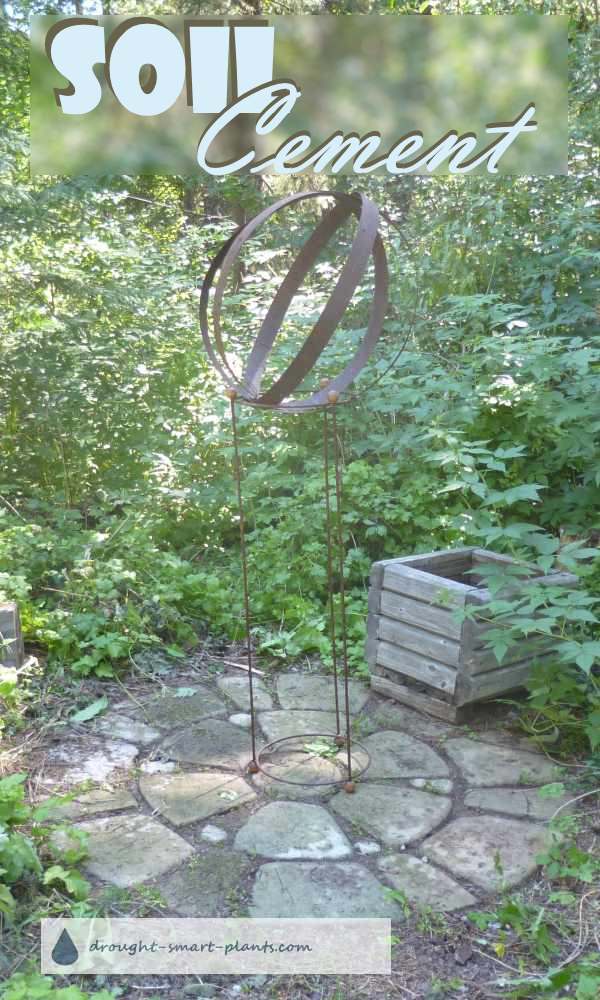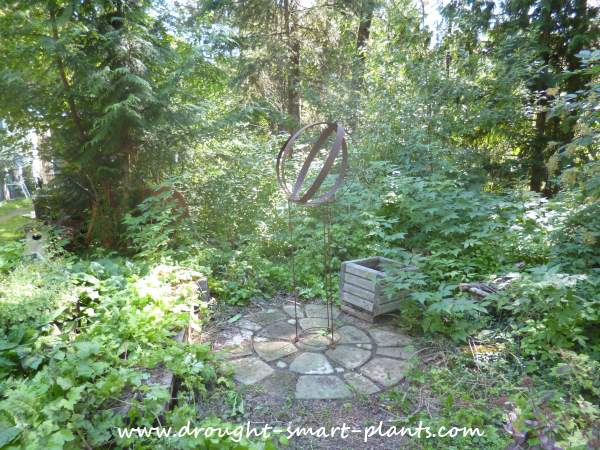Quick and Cost Effective Patios and Paths
As an Amazon Associate I earn from qualifying purchases.
Other links on this site may lead to other companies that I’m associated with.
Soil cement was originally developed as a very economical way of making a tough resilient surface for airport runways, industrial sites and even roads.
During times of economic hardship such as during the 1930’s, the development of techniques for quick and cost effective road building enabled governments and businesses to keep the economy rolling.

It has also been used as a levee strengthener, for constructing dams and for building complete houses using poured earth techniques; soilcrete as it’s also known, has a myriad uses.
Not restricted to large scale projects it’s also been trialed for use as a dome building material and for walkways and patios in home garden settings.
New uses are being explored as alternative building methods evolve.
Making a seating area or path out of soil cement is an easy and unique way to make a firm walking surface while still maintaining a rustic look. If you have only clay or soil with lots of organic matter, this is fine for plants but not so much for soil cement.
Ideally, your soil will be a sandy type, and well drained. Good drainage is essential, as water from heavy rainfall under the slab will freeze and buckle your patio or path just as severely as regular concrete.

How to make Soil Cement
Simple in theory, this material is somewhat particular in the proportions of each ingredient.
Too much cement powder will make it brittle, and if the proportion of soil is too high it will be crumbly.
Ideal percentages are 80% sieved dry or slightly damp soil to 20% powdered cement, and some builders swear by the addition of various amounts of hydrated lime to improve plasticity – the ability to be molded before drying.
The soil used for a structure must be analyzed and tested for its strength – for a simple path or patio this is not so important.
Rotor tilling or thoroughly mixing the ingredients by raking is the next step, or combining all the ingredients in a cement mixer.
Spread the mix over the area to cover – a form of two by fours on edge will give you a good depth over a layer of small gravel for drainage.
Pebbles or a texture can be added to make a pattern, tamped down and then a fine mist of water can be sprayed over the whole area. It will take a few days to cure, which means no walking on it – remember to keep pets off it too, as the cement will be caustic until it dries completely.
Plant spreading plants such as thyme along the edges to soften it; the colour of the finished project, as it was built with native soil, will blend beautifully into the background.
I had a lot of fun building patio blocks with soil cement. You can see more about this project here.
It’s a winning combination of durability and ease of maintenance, even in xeric gardens or natural gardens.
Is a soil cement project in your future? See Xeric Garden Projects for more ideas.

